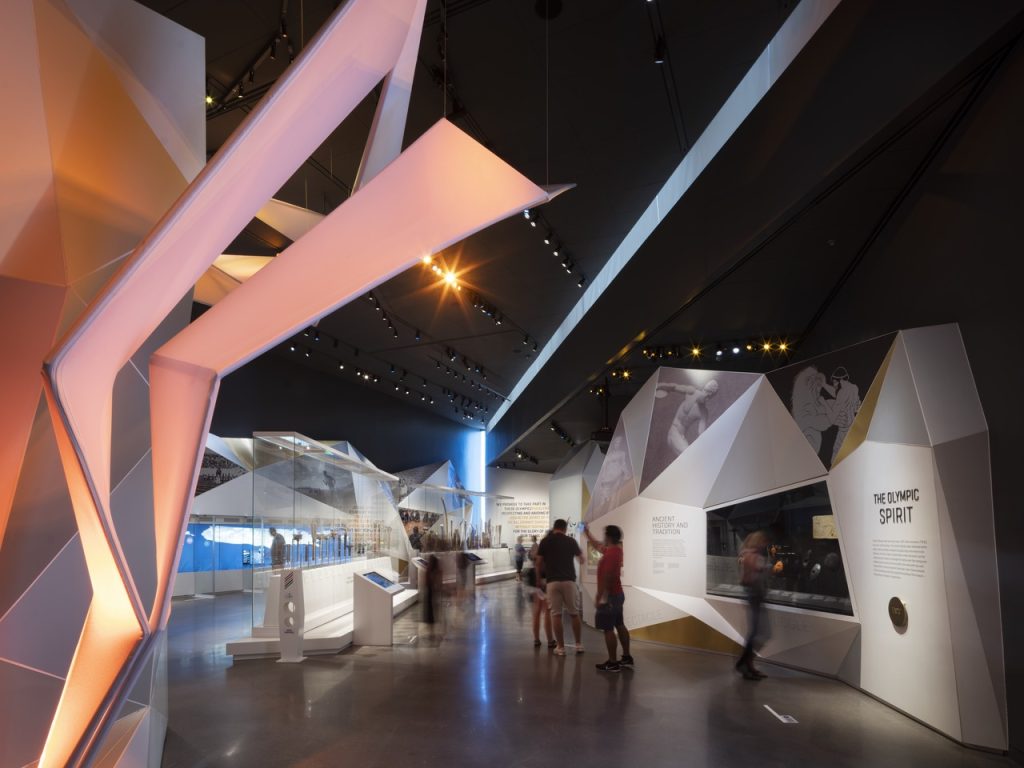The U.S. Olympic and Paralympic Museum shines brighter than gold
When composer John Williams’ iconic “Olympic Fanfare and Theme” is cued up in July for the Paris 2024 Olympic Games, it’s likely to bring back a flood of memories for U.S. fans. Whether it’s legendary team performances from the 1980 “Miracle on Ice” hockey team and the Michael Jordan-fronted 1992 “Dream Team” or the grittiness, grace and style of individual gold-medal winners such as Mary Lou Retton, Florence Griffith Joyner, Jesse Owens and Dorothy Hamill, the Olympic Games are woven into the fabric of the country. The feats of Duke Kahanamoku, Jim Thorpe and Trischa Zorn-Hudson (the most successful athlete in the history of the Paralympic Games, winning 55 swimming medals—including 41 gold), not only boosted the pride of a nation but also proved the mettle of America’s melting pot of athletes.
The mission of the U.S. Olympic & Paralympic Museum in Colorado Springs, CO, is to honor the country’s most gifted athletes through the creation of one of the most accessible museums in the world. The 60,000-sq ft attraction offers space where visitors can share a common experience through the immersive and accessible journeys of Team USA’s Olympic and Paralympic athletes. The museum features interactive exhibits, innovative displays, 12 galleries and a vast collection of artifacts all designed to communicate the Olympic values of excellence, friendship and respect, as well as the Paralympic principles of determination, equality, inspiration and courage.
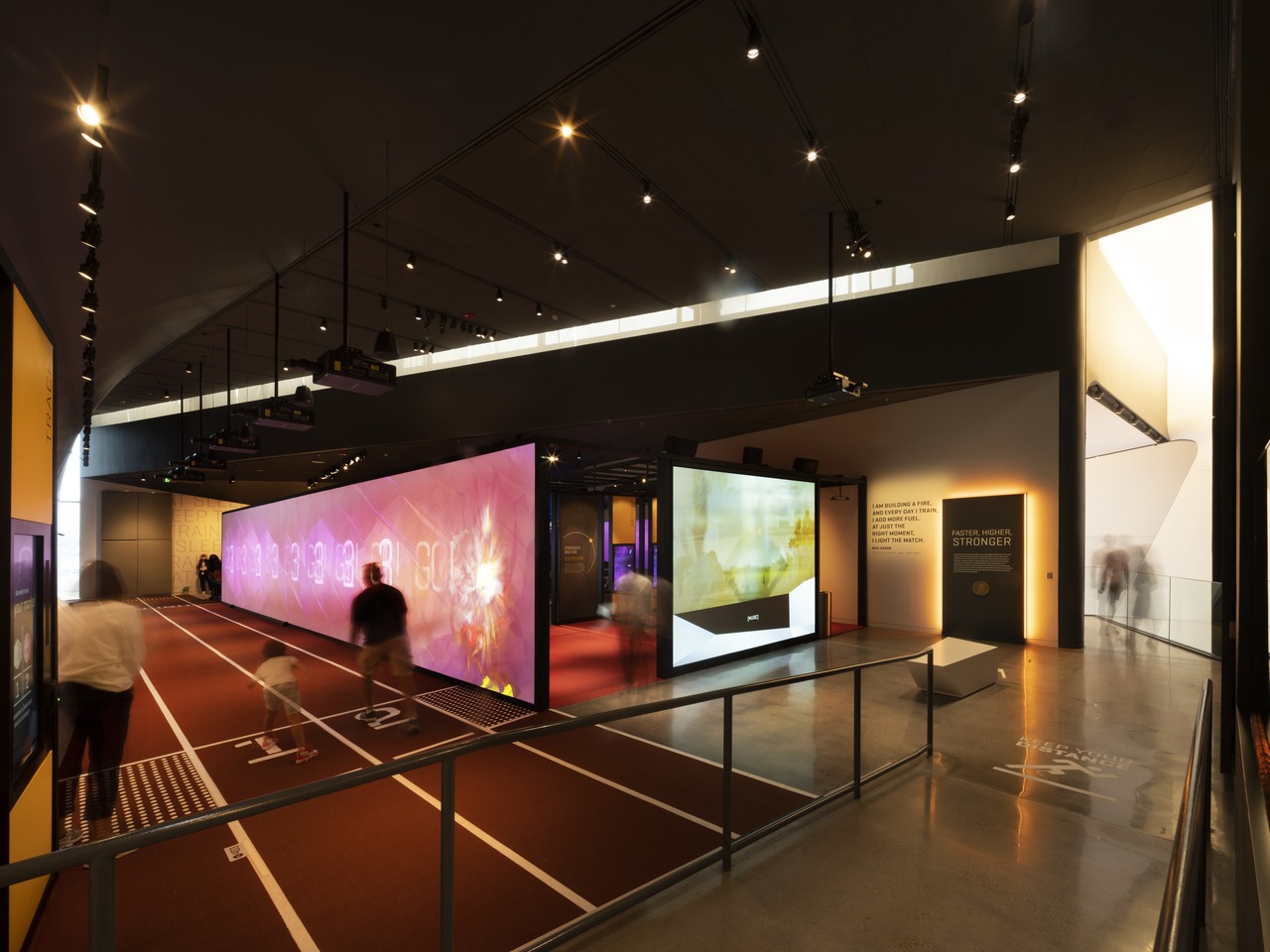
Upon entering the ADA-compliant museum, visitors begin their exploration with an elevator ride to the top floor, where a ramped path winds through interactive galleries and down toward the main level, creating a parallel visit experience for guests of all abilities. Along the way, various technologies are employed including open captions, audiodescription tracks, assisted listening, universal keypads, RFID-triggered customizations and accessible exhibit spaces with ramped experiences, among others. Team USA athletes were involved and consulted throughout the project to ensure an authentic experience.
“The museum’s geometry is dynamic and in a constantly changing articulation, with walls and ceilings that fold, bend, twist and blur the distinction between floor, walls and ceiling,” explained Ted Mather, principal at Available Light. “The lighting discreetly accentuates these forms while keeping the primary focus on the exhibits. The electric lighting functioned as a visual glue between exhibits, media and daylight.”
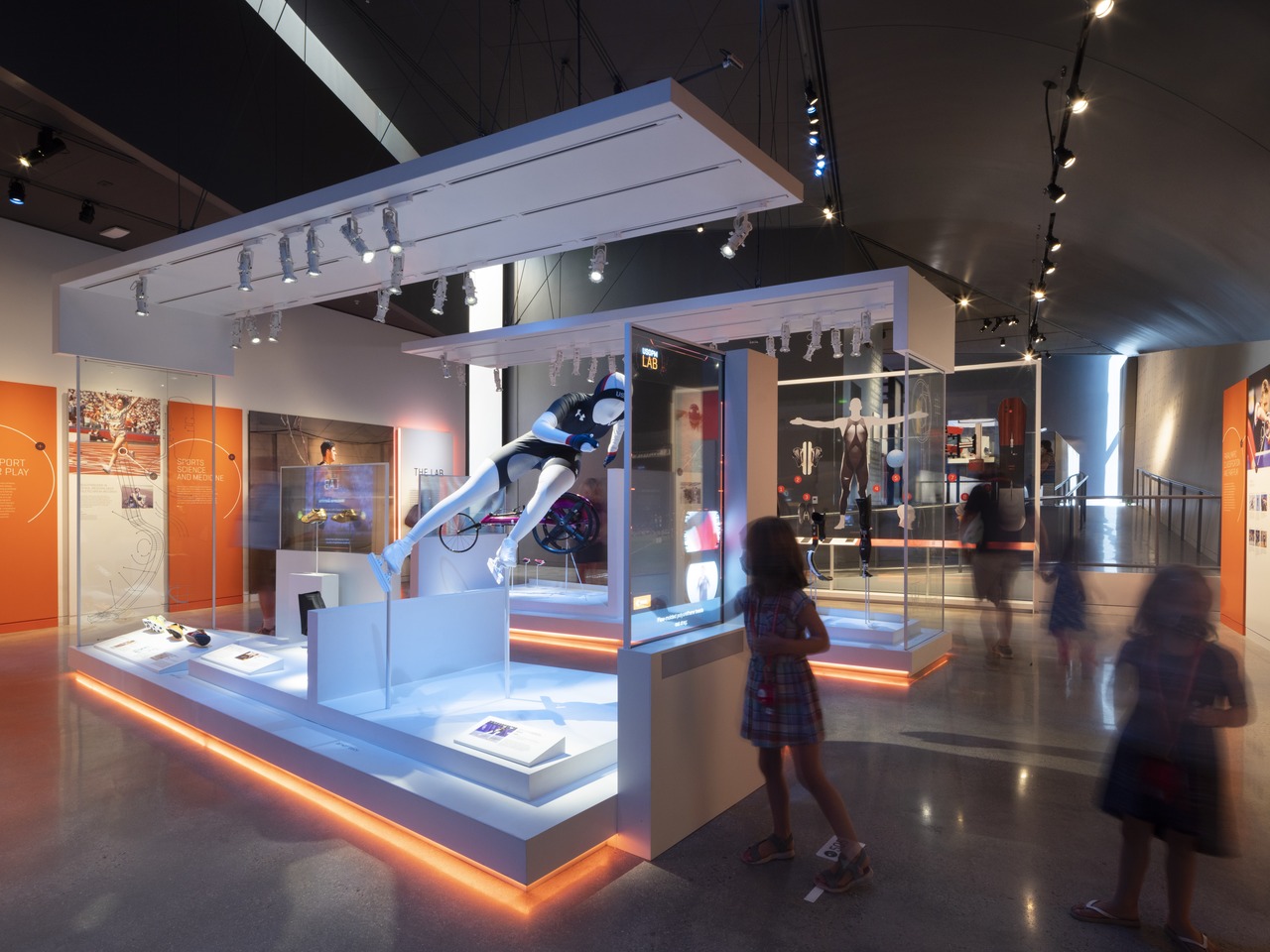
Available Light programmed Martin Professional Rush color-changing LED fixtures to deliver an immersive video presentation that brings the games’ opening ceremonies to life by injecting a dynamic, environmental movement of light to these iconic events. An LED track lighting system, with LSI track heads using Soraa Par30 lamps with snap system lenses and PRG/Knight lighting projectors, created a wide range of colors and textures by incorporating specialized lenses, FX Industry filters and gobos from Roscoe and Apollo.
Creatively modulating the application of color and intensity provided smooth and delicate transitions between elements. The contrast between vibrant saturated colors and sharp, crisp white highlights “embellishes this story of human tenacity overcoming fear, physics and obstacles to become a winner,” added Mather.
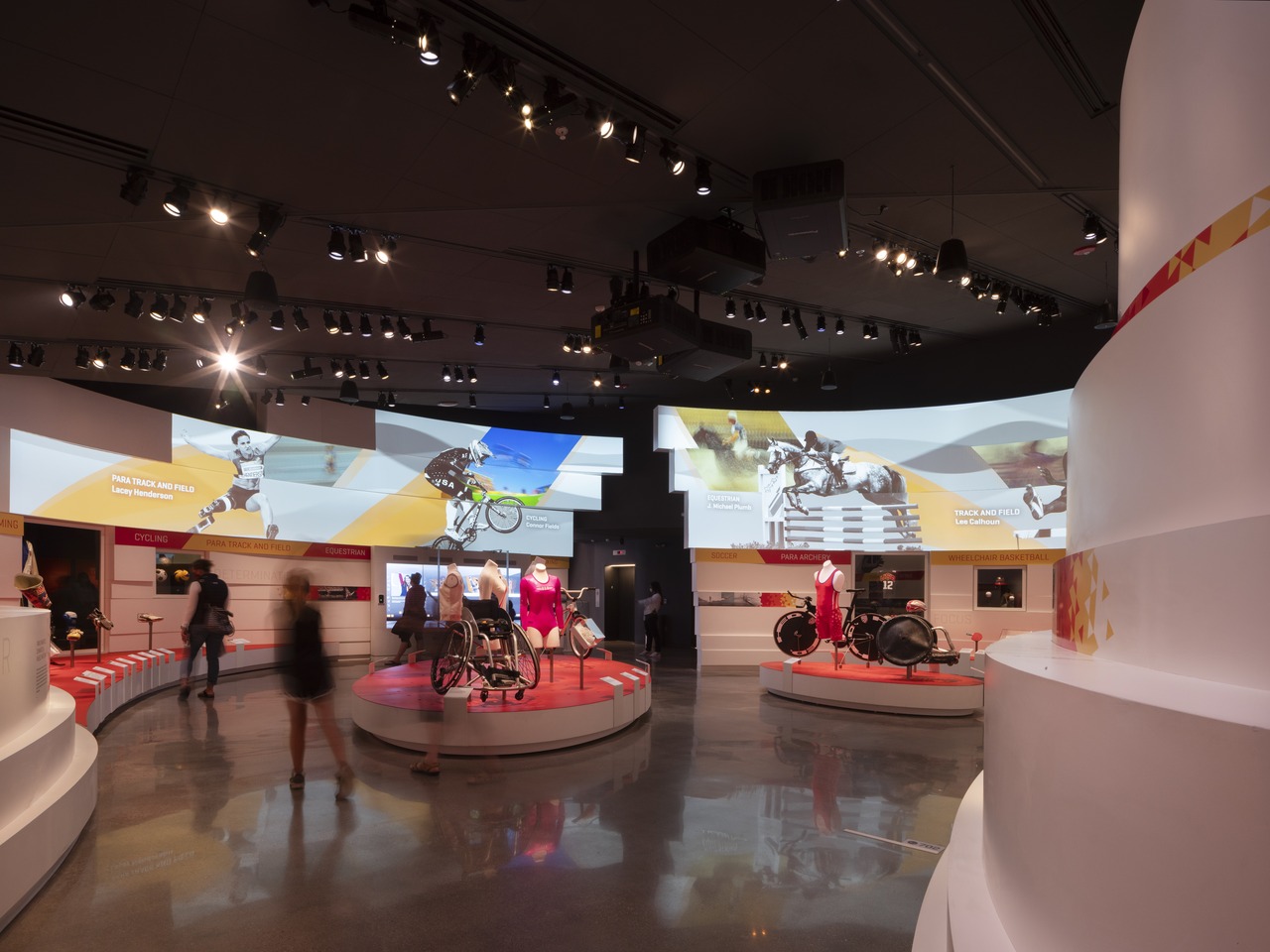
High-end theatrical consoles were deployed to reap the full benefits of multi-attribute moving lights, color-changing luminaires and other effects generators. Sequences were then streamed and recorded on localized DMX playback devices, providing an economic, stable and low-maintenance solution for dependable daily operation.
The museum offers exhibits from the Summer and Winter Games, a Hall of Fame and a Medal Collection, to name a few. The overarching design goal of the facility’s exhibit lighting was to immerse visitors in dramatic spaces that make tangible the stories of remarkable Olympic and Paralympic athletes. Like the athletes themselves, the artifacts are the stars of the show, but the architecture and lighting serve as would any quality coach, putting them in the best position for success. The interplay of architectural and exhibit design features daylight zones that are adjacent to exhibit areas, including artifacts. This presented a lighting challenge to create a cohesive and noteworthy space while separating bright user engagement areas from light-sensitive artifact zones.
“The unique interior configuration demanded precise planning and calculated geometry to properly light a variety of exhibits and artifacts from constantly varying ceiling planes,” Mather stated. “Many of the exhibits are hands-on; visitors either touch real objects or experience digital simulation. Light-sensitive artifacts throughout required careful limiting of light levels to meet conservation standards.”
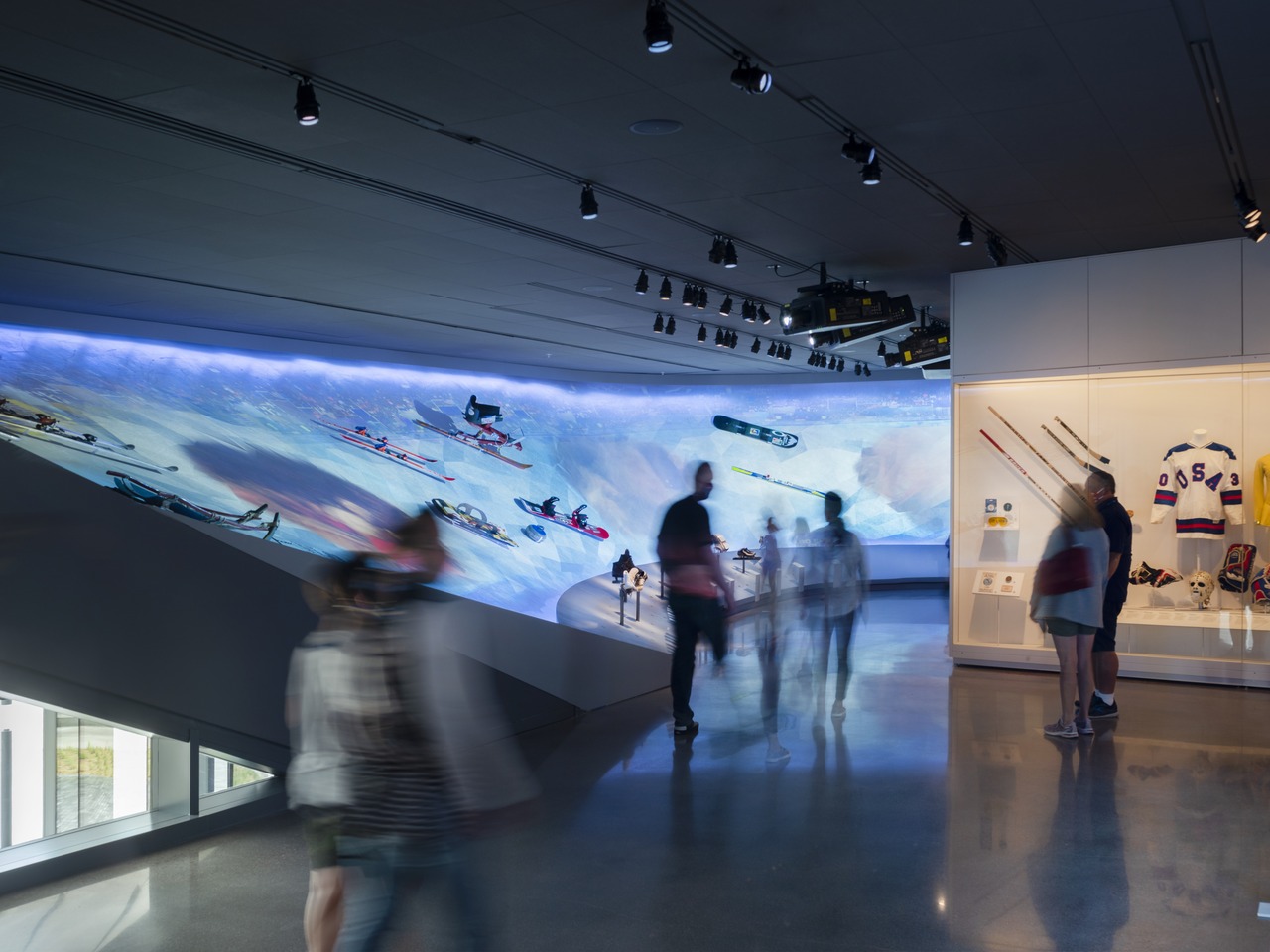
Inside geometrically complex exhibit cases, miniature LED fixtures by LUXAM and Gantom, with Juno track and track heads, were magnetically mounted to highlight artifacts sculpturally, dramatically and responsibly. A decentralized control strategy that uses low-voltage track dimming and local DMX controllers was employed to tailor controls to an ever-developing exhibit experience.
With an Olympic Games showcased every two years, Mather said that the U.S. Olympic and Paralympic Museum allows its guests to experience moments that continue to extend beyond the realm of sports into the country’s zeitgeist. “Utilizing all the characteristics of light: intensity, color, pattern, transition, angle and shadow, thoughtfully arranged to direct the visitor’s eye in a glare-free environment, the lighting helps create memorable spaces, interactive experiences and generous opportunities for photo-op moments that will resonate beyond the boundaries of the museum walls.”
At A Glance
- The lighting design included 21,500 sq ft of museum space.
- The lighting power density is 1.3 watts per sq ft for exhibit lighting.
- Illuminance levels for exhibit areas range from 1 to 5 footcandles for circulation and 5 to 50 fc for exhibit graphics and artifacts.
THE DESIGNERS |
- Ted Mather is principal at Available Light.
- John Delfino is senior associate at Available Light.
- Dylan Bomgardner is currently a designer at Group 1440 who worked on the museum while an associate at Available Light.
Photos: Nic Lehoux Architectural Photography


